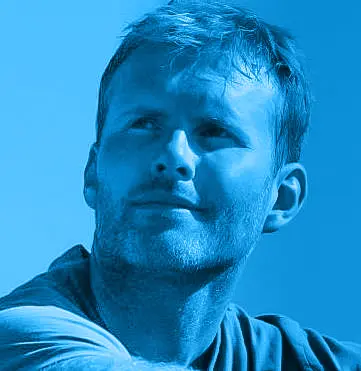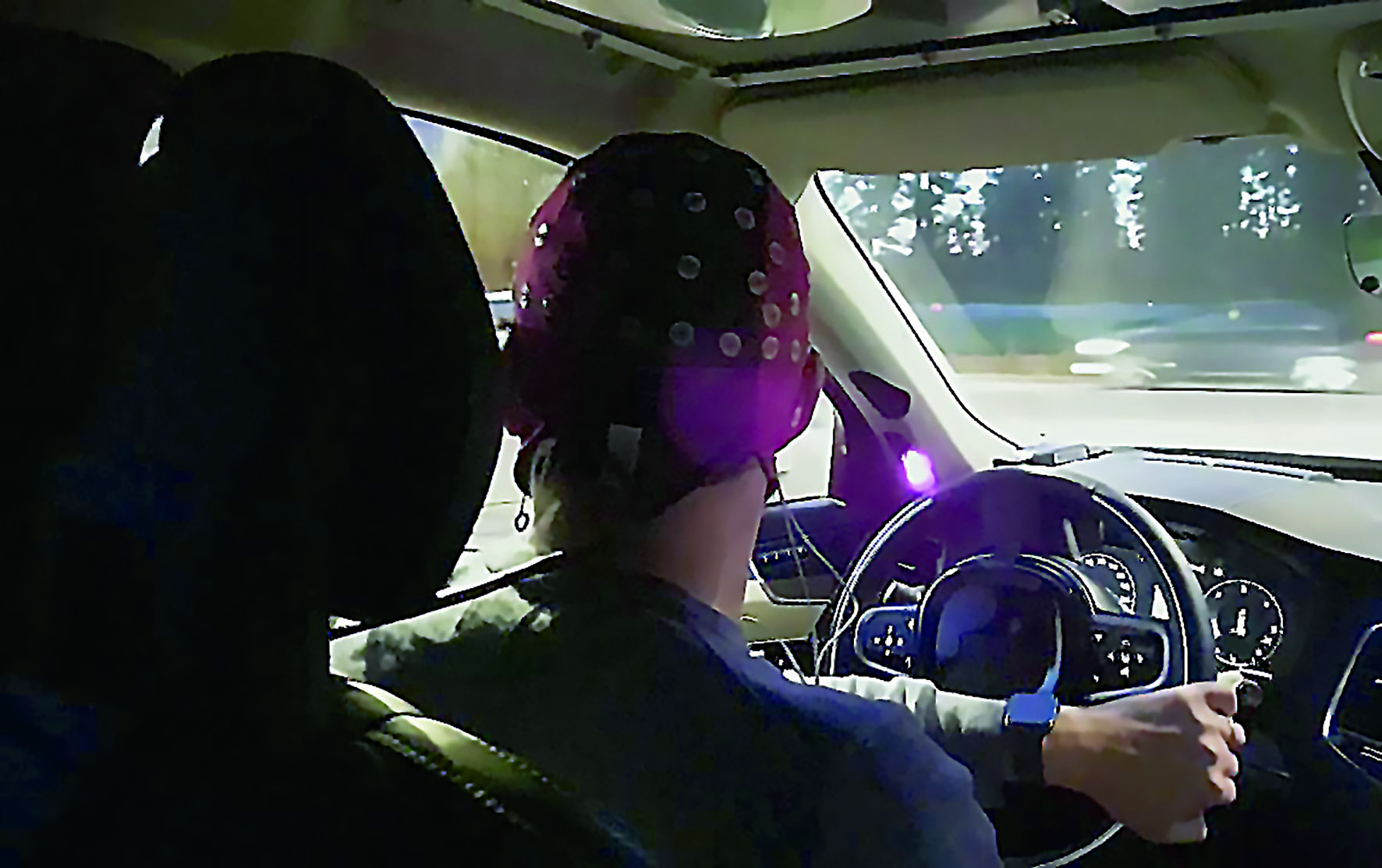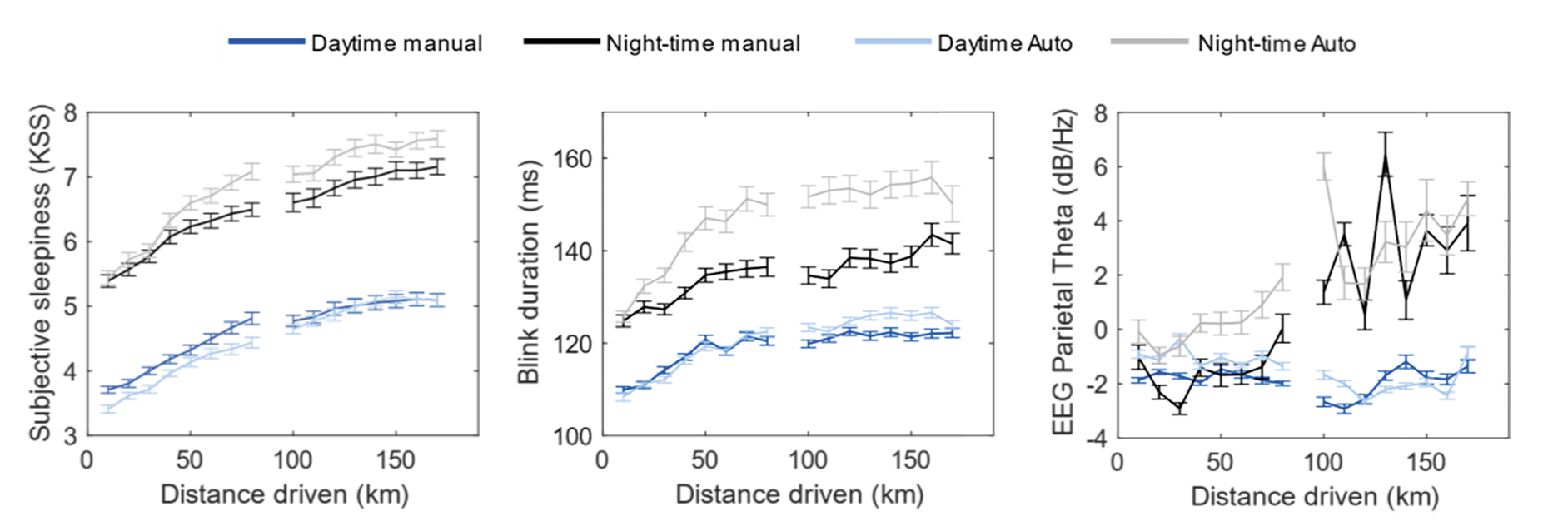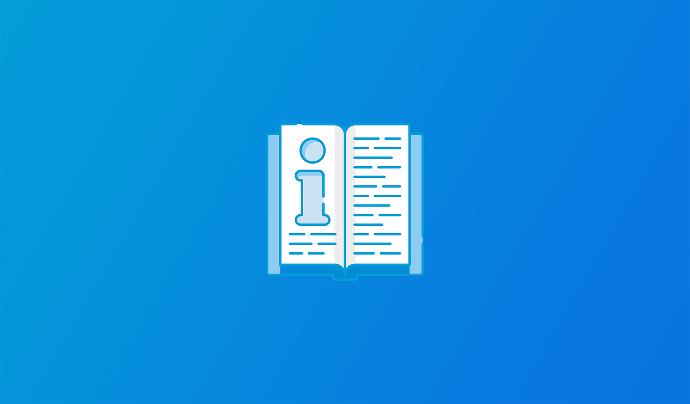This study, led by Prof. Dr. Christer Ahlström, explores how partially automated driving affects driver sleepiness. Using the mobile eego™ sports EEG system, researchers monitored brain and physiological activity during day and night highway drives in manual and partially automated vehicles. Results showed increased signs of fatigue—particularly at night—when using driving assistance systems, highlighting potential safety concerns due to under-stimulation and boredom in such vehicles.
Contents
Prof. Dr. Christer Ahlström- A short scientific biography The research What is the relevance and novelty of the current study? How was the experiment conducted? How did the physiological data provided by the eego™ sports solution inform about the fatigue state of the participant? Interview References
Prof. Dr. Christer Ahlström- A short scientific biography

Christer is a senior researcher at the Swedish National Road and Transport Research Institute (VTI) and an Associate Professor in Biomedical Engineering at Linköping University. He primarily works with acquisition, processing, and analysis of data, with particular interest in biomedical engineering aspects of driver inattention and driver sleepiness. He has a master’s degree in Computer Science and Engineering (2002) and a PhD in Biomedical Signal Processing (2008) from Linköping University, Sweden.
The research
Christer and his colleagues aim at investigating the physiological mechanisms related to driver sleepiness. This study investigates whether partially automated driving effects driver sleepiness and if so how. A mobile eego™ sports system was employed to measure brain activity from participants while actively driving.

Photo by Maria Elvåker, VTI.
What is the relevance and novelty of the current study?
Regularly car crashes happen as a result of fatigue. The contribution of fatigue to car accidents is about 15-25%. Fatigue crashes mostly occur in the nighttime or in the morning hours when drivers experience maximum drowsiness after staying awake for long periods or when the circadian sleep pressure is high. In partially automated vehicles available today, the driver is responsible and obliged to monitor traffic, while at the same time being relieved from the actual driving task (steering and using the pedals). This transformation of the driving task from active driving to active monitoring may lead to increased levels of fatigue due to boredom and under-stimulation.
How was the experiment conducted?
Sleepiness was measured with subjective (i.e., rating scales) and objective indicators (i.e., physiological measurements, and electroencephalographic (EEG) measurements with the eego™ sports solution). Each study participant drove for about 2 hours on a public highway, both during the day when well-rested and later at night after being awake since early morning. This was done twice, both in a manually driven car and in a level 2 partially automated vehicle. The results suggested that the driving assistance system enhanced sleepiness, especially during night-time.
How did the physiological data provided by the eego™ sports solution inform about the fatigue state of the participant?
The eego™ sports solution comprises of an EEG system which is completely mobile and has an integrated, rechargeable battery. This allowed Christer and his colleagues to perform long-term EEG recordings. The additional sense box allows for simultaneous and synchronized recordings of other physiological signals such as ECG and EOG.
The following figure (Ahlström et al, 2021) illustrates how different sleepiness indicators vary as a function of the type of car (manual vs. partially automated) and day/night conditions. Specifically, EEG theta band activity increased when the body prepared for sleep.

Figure 1: The different sleepiness indicators (subjective sleepiness on the Karolinska sleepiness scale, blink durations and theta frequency band) are differently distributed depending on the driver’s condition and the type of driven car.
Interview:
VTI started doing experiments with sleepy drivers about 20 years ago. In the beginning we used our advanced driving simulators, then we started doing experiments on test tracks and eventually also on public roads. The journey has been invaluable to us. We have learnt that the high external validity that we achieve on public roads is needed to truly capture the drivers’ struggle to stay awake. We always use vehicles with dual command and trained professional safety drivers, and we have permission from the Swedish government that allows us to run experiments with sleepy drivers on public roads.
These intermediate levels of automation and assistance are problematic. The driver is responsible and obliged to monitor traffic, while at the same time being relieved from the actual driving task (steering and using the pedals). This change from active driving to active monitoring may give rise to conditions like passive fatigue, sleepiness, boredom, or cognitive underload, which may also affect operators’ processing ability and performance. It is however difficult to speculate on the impact of partial automation on fatigue-related crashes. An increase in passive fatigue would lead to more crashes, but at the same time, automated functionalities such as lane and distance keeping systems may prevent these crashes from happening.
It has been claimed that the best way to keep a driver alert in an automated vehicle is to let him/her drive (Thomas Dingus, Fatigue Conference, 2017). While there is a lot of truth to this statement, that would also hold back the many advantages with today’s active safety systems. An alternative is to use some sort of preventive countermeasure that helps keeping the driver alert and focused on the driving task.
Fatigue countermeasures aim to prevent the driver from becoming too fatigued, or to correct and alert the driver when fatigue occurs. Countermeasures are available on many levels, from public awareness campaigns or roadside initiatives, via work scheduling and fatigue risk management, to driver support and intervention systems in the car. Most drivers are already aware that they are sleepy, so an important aspect of countermeasures is to present alternatives and solutions, such as guidance to the nearest rest stop.
References

Effects of partially automated driving on the development of driver sleepiness. Accident Analysis and Prevention, 153
by Ahlström, C., Raimondas , Z., Jansson, H., Forsberg, C., Karlsson, J., & Anund, A. (2021).
Read More